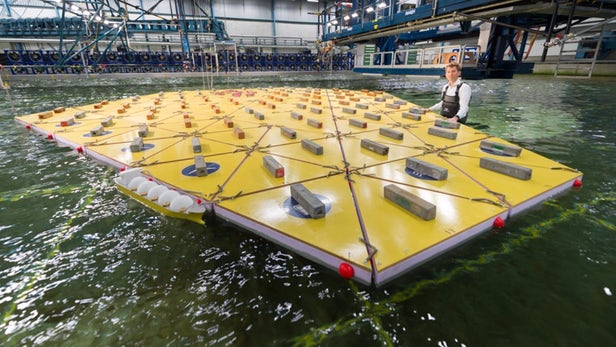
Breaking News
 2 Hours of Retro Sci-Fi Christmas Songs | Atomic-Age Christmas at a Snowy Ski Resort
2 Hours of Retro Sci-Fi Christmas Songs | Atomic-Age Christmas at a Snowy Ski Resort
 Alternative Ways to Buy Farmland
Alternative Ways to Buy Farmland
 LED lights are DEVASTATING our bodies, here's why | Redacted w Clayton Morris
LED lights are DEVASTATING our bodies, here's why | Redacted w Clayton Morris
Top Tech News
 Travel gadget promises to dry and iron your clothes – totally hands-free
Travel gadget promises to dry and iron your clothes – totally hands-free
 Perfect Aircrete, Kitchen Ingredients.
Perfect Aircrete, Kitchen Ingredients.
 Futuristic pixel-raising display lets you feel what's onscreen
Futuristic pixel-raising display lets you feel what's onscreen
 Cutting-Edge Facility Generates Pure Water and Hydrogen Fuel from Seawater for Mere Pennies
Cutting-Edge Facility Generates Pure Water and Hydrogen Fuel from Seawater for Mere Pennies
 This tiny dev board is packed with features for ambitious makers
This tiny dev board is packed with features for ambitious makers
 Scientists Discover Gel to Regrow Tooth Enamel
Scientists Discover Gel to Regrow Tooth Enamel
 Vitamin C and Dandelion Root Killing Cancer Cells -- as Former CDC Director Calls for COVID-19...
Vitamin C and Dandelion Root Killing Cancer Cells -- as Former CDC Director Calls for COVID-19...
 Galactic Brain: US firm plans space-based data centers, power grid to challenge China
Galactic Brain: US firm plans space-based data centers, power grid to challenge China
 A microbial cleanup for glyphosate just earned a patent. Here's why that matters
A microbial cleanup for glyphosate just earned a patent. Here's why that matters
 Japan Breaks Internet Speed Record with 5 Million Times Faster Data Transfer
Japan Breaks Internet Speed Record with 5 Million Times Faster Data Transfer
Artificial floating islands could expand liveable space at sea

It's a remarkable feat of engineering how much land they've managed to reclaim by building dikes, but it might not be a sustainable solution nowadays. To update that tradition, the Maritime Research Institute Netherlands (MARIN) is testing the concept of an artificial floating island.
MARIN's floating island is made up of large triangles that connect to each other in a modular fashion. Structurally, it works like the Italian Floating Piers and walkways we saw last year, but on a much bigger scale: MARIN says that floating islands built in this way could be as big as 5 km (3.1 miles) wide, and used for a variety of purposes.
"As sea level rises, cities become overcrowded and more activities are carried out at sea, raising the dikes and reclaiming land from the seas are perhaps no longer an effective solution," says Olaf Waals, project manager of MARIN's floating islands. "An innovative alternative that fits with the Dutch maritime tradition is floating ports and cities."

 $100 SILVER CONFIRMED?
$100 SILVER CONFIRMED?

